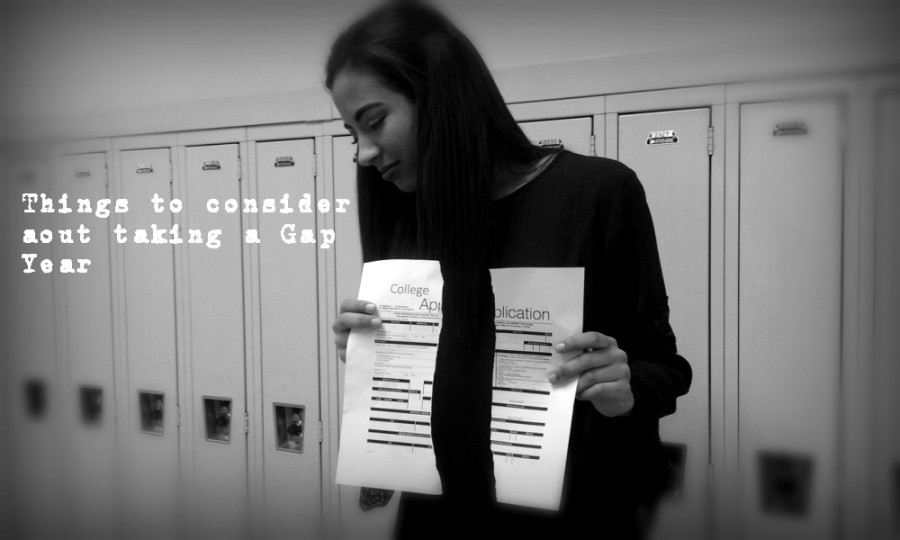The gap year: taking a break between high school and college
It’s a big choice for high school seniors: college right after high school, or take a gap year?
November 24, 2015
Breaks after high school can be cast in a very dim light; it is easy to find oneself going down the wrong path and never setting out to do what you originally planned.
However, with the right guidance and tips, a gap can be the perfect motivator to reach your long term goals.
It’s no surprise that everywhere in the country high school students are being urged from every direction to go to college. But how can you be sure that college is the right choice for you? Sometimes, if you’re genuinely unsure of what you want to do after school, taking a gap year, or even semester, can be the best option.
While a gap year is more common, and often encouraged, throughout Europe, Americans may not have the best understanding of a break between high school and college. A gap year is a year taken off from school after your senior year of high school and before your freshman year of college. It is often used as a refresher from the tedious schedule of school and to find the things that truly inspire you.
Mrs. Adams, Vice Principal at Bellwood-Antis High School, has recently been taking over some of the responsibilities usually supervised by the guidance office. Although she did not take a gap year, herself, she did have some insightful information from the viewpoint of a parent and a school official.
“Every student is an individual and has their own individual needs and every family has their own set of circumstances,” said Mrs. Adams, “Students and families have to make the decision that fits their own personal needs. I don’t believe there is a right or wrong answer. Some reasons could be financial, family matters, and the maturity of the student.”
The most common concerns with taking a gap year are that you’ll lose your focus on education and forget the information you obtained from high school. However, it can also be a time to refresh your mind, make some extra cash, and live a little.
The American Gap Association reports that 90% of students who take a gap year return to college, but there is still a negative stigma that goes along with them. Many of the myths about a gap year are just that, myths. In fact, many colleges routinely accept and encourage students to take a gap year
“Ultimately it is up to the individual- choose what is best after spending time thoroughly contemplating both advantages and disadvantages of this extremely important decision,” said middle school teacher and career/college adviser, Mr. Partner. “Years ago, I would be totally against taking a ‘gap year’ between high school and college. However, every individual must weigh the advantages and disadvantages and see what best fits him/her.”
90% of students who take a gap year did return to college
Princeton and University of North Carolina offer scholarships for students electing to take a break before entering college and Harvard, the crown jewel of universities, encourages a gap year. According to a story in Time Magazine, by February, Tufts University will implement a 1+4 bridge program which will offer opportunities for national and international students to take a gap year, regardless of the student’s ability to pay.
The most important thing to keep in mind when considering your educational future is that it is imperative to have a plan. You don’t need to have every detail worked out, but there needs to be a clear path cut for you to follow. Whether this path is volunteering, lining up an internship, or just finding a full time job for the first time in your life, make sure you have an attainable goal to reach.
If not, you could see yourself falling behind your peers, and no one wants to show up to a high school reunion with nothing to show.






